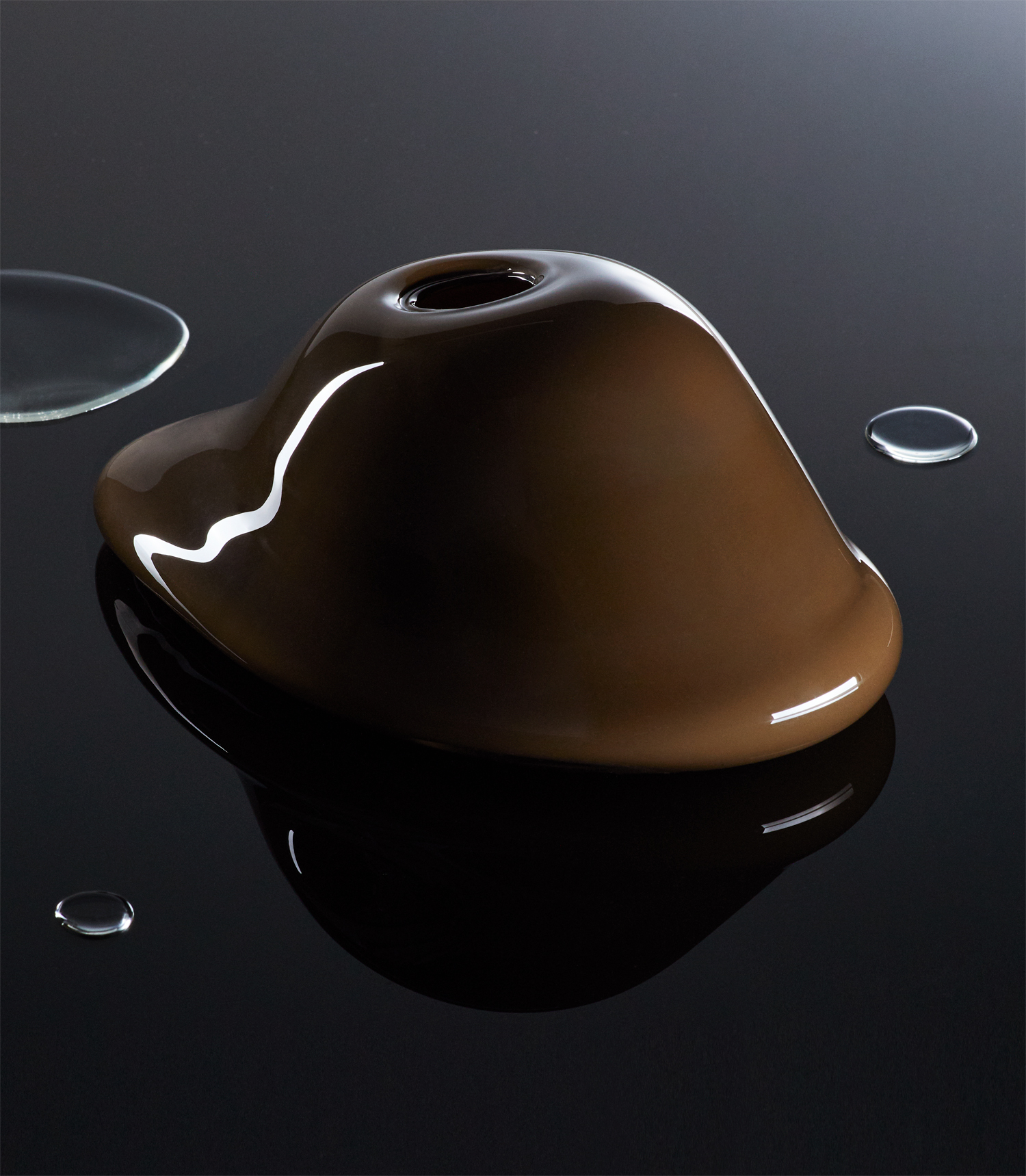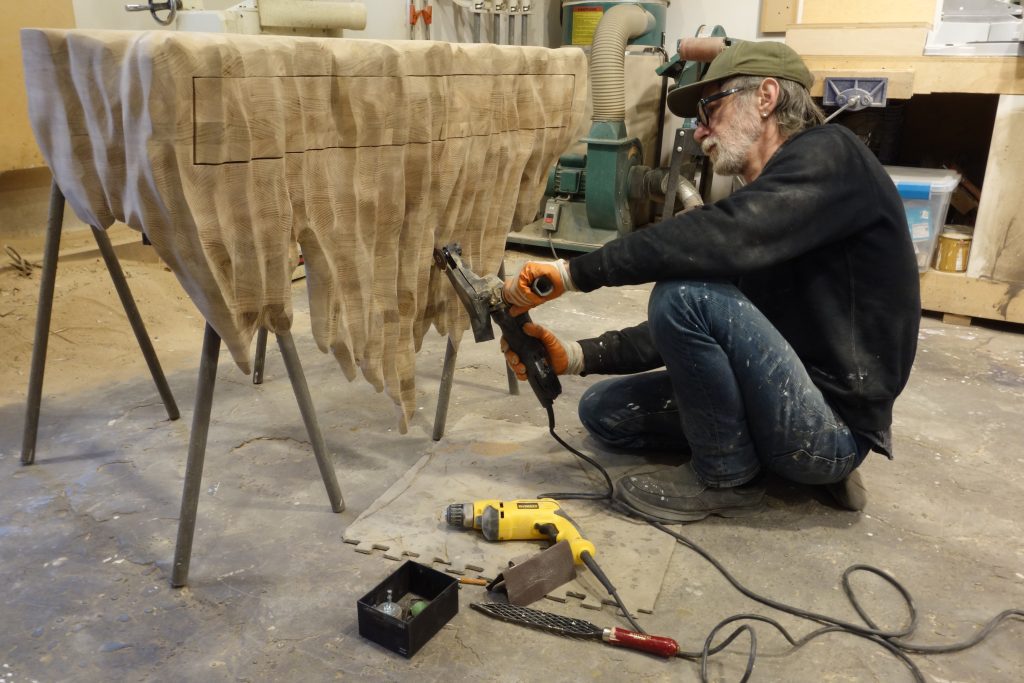

The Boundaries of Neotenic Design: An interview with Justin Donnelly of Jumbo
Shop the full “MELT” collection >
What is it about soft curves, chubby appendages, and organic shapes that have a hold on us? Even in the furniture we surround ourselves with, there has been a draw in recent years towards exaggerated, flowing forms and plush, “need to touch” textures. This movement toward exaggerated proportions and softened forms was explored by Justin Donnelly and Monling Lee in their 2019 exhibition, “Neotenic Design” at A/D/O, a creative warehouse space in New York that shuttered in 2020 amidst the Covid-19 pandemic.
Derived from the biological attribute of neoteny, in which childlike characteristics are retained as an adult, neotenic design is posited to elicit a psychological response that attracts us to the aesthetic of “cute”. Donnelly and Lee, founders of the renowned New York-based design practice Jumbo, connected the anthropomorphism of neotenic interior design with ethologist Konrad Lorenz’s theory that Kindchenschema, or “cuteness”, inspires the human desire to nurture and care. This plush furniture and decor pieces were no different, rousing a similar response in lovers of collectible design.


With increased time in our homes and a desire for comfort in all of its forms during the pandemic, our attraction to this familiar style struck a cord with many. “Fat or oversized furniture is nothing new. But identifying personhood in design objects, and liking it, is relatively new,” Donnelly explains. “We want to fall in love with cute, cuddly furniture. This was especially true during the first few months of the pandemic when we were socially isolated.” Our physical and emotional connection to the spaces around us was heightened during this time, igniting the “care” aspect of this trend for our own selves.




More recently, Jumbo’s own work delves into the emotion-receptive qualities of the neotenic realm of design. Donnelly describes: “As a studio, we don’t just want to make fat or overstuffed design objects. Instead, we want to bring the susceptibility and the helplessness that we associate with childhood to our design objects. Sometimes this could be a big, dumb chair made from bent foam that is squeezed together. Other times it could be in glass objects that are clearly deflated or imperfect. For our studio, it’s this visual softness that yields an emotional effect—it helps us to identify a design as an object of desire—something for us to care for and love.”






In collaboration with HNH gallery, “MELT”, an exhibition of radical contemporary design by thirty New York-based artists and designers, was on show from 10 May to 31 May. As its title suggests, this group show featured the work of a diverse range of makers who are tuned into the experimental and expressionist aesthetic that has emerged in recent years. This coincidentally cohesive body of work finds each designer pushing the limits of form and discovering a common language.




“The pieces on display resemble a constant flow or movement which makes us feel dynamic and present at the same time. This is what I hope visitors will feel when visiting,” says Martin Clausen, co-founder and Creative Director of ADORNO. “Despite the objects being static, they give an opportunity to grasp a moment in time, almost like time stands still.”
“MELT”, which highlights the dripping, fluid forms that are making waves in the contemporary collectible design scene, builds on the neotenic aesthetic. “There is an appealing aspect of the imperfection in these forms,” the Jumbo founder explains. “Humankind has always been fascinated by the imperfect.” Their appeal comes directly from their expressive, almost liquified state – something unusual, yet intriguing; cute in an unorthodox, almost alien way.
Donnelly goes on to describe that, “philosophically, the melting forms we have seen recently are the result of two factors — The first is our native interest in observing kinetic qualities in our surroundings … The second is the recent proliferation of easy and cheap 3D modeling software that allows us to apply kinetic factors to wireframe models. Design always follows the tools by which it is envisioned. You can see this in each successive generation.”






With the influence of social media and the prevalence of mouldable materials like spray foam, ceramic, and resin, can we expect this evolution of melting, fluid forms to be a mainstay of contemporary collectible design? From mirrors to lamps, chairs to loudspeakers, the opportunities for these media – and this style – are seemingly endless. Fluid forms are only limited by their makers’ imaginations.
Donnelly argues that “if the melting phenomenon is going to continue to develop, it is going to have to develop a richer material palette.” He foresees that designers will “have to employ luxe materials like glass, steel, and leather to achieve similar aesthetic ends” in order to bring a greater sense of materiality and richness and continue developing this distinctive style.




About Jumbo
Jumbo is a New York-based design practice founded by old friends — Justin Donnelly and Monling Lee. Together, they produce objects and environments that are guided by an ongoing interest in reductivism and whimsy. As a result, Jumbo’s projects are both technical in execution and joyful in approach.
The “MELT” collection features pieces by ARCANA, Artemis Kotioni, Bailey Fontaine, Bjarke Ballisager, Caroline Zimbalist, Christopher Miano, Emma Deegan, Gustavo Barroso, Hampus Lideborg, J McDonald, John Black, Joseph Algieri, Jumbo, Kickie Chudikova, LES PUNK, Lucas Lovejoy, Luke Malaney, Manifold, Martina Guandalini, Michal Cihlar, Mike Ruiz Serra, Mush Studios, Nicholas Devlin, River Valadez, Sarah Rupp, Sarah Waites-Turner, Silvana Vergara, Studio Poa, studio noon, Talbot & Yoon, & Taylor Scott Ross.










